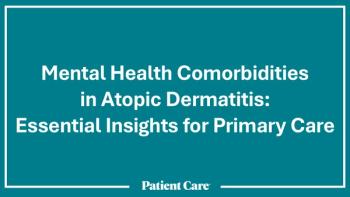
Effects of Childhood Cancer Linger
AMSTERDAM -- Children who survive childhood cancer -- especially those who had radiation therapy -- grow up to an increased risk of later adverse effects, researchers here said.
AMSTERDAM, June 26 -- Children who survive childhood cancer -- especially those who had radiation therapy -- grow up to an increased risk of later adverse effects, researchers here said.
Physicians treating young adults who have survived childhood cancer should be watchful for a range of adverse events that would usually be thought rare in that age group, according to a report published in the June 27 issue of the Journal of the American Medical Association.
In a long-term retrospective cohort study, almost 75% of the children successfully treated for cancer had at least one adverse event, such as orthopedic disorders or second tumors, later in life, found Huib Caron, M.D., Ph.D., of Emma Children's Hospital/Academic Medical Center in Amsterdam, and colleagues.
One in four had five or more such events and four in 10 had at least one severe or life-threatening event, the researchers said.
Among those who were treated with radiation, 55% had what the investigators called a "high or severe" burden of adverse events. In comparison, the rate was 15% among those treated with chemotherapy alone and 25% among those treated with surgery alone, they said.
Put in other terms, those treated with radiation were twice as likely to have a high or severe burden of adverse events later in life as those treated with surgery, while those treated with chemotherapy were 35% less likely to have such a high burden of disease.
The odds ratios were 2.18 and 0.65, with 95% confidence intervals from 1.62 to 2.95 and from 0.46 to 0.90, respectively.
The common terminology for adverse events, the researchers noted, defines a grade 3 event as severe, a grade 4 event as life-threatening or disabling, and a grade 5 event as an adverse-event-related death.
For this study, the researchers defined a high burden of adverse events as at least two grade 3 events or one grade 4 event; severe was defined as more grade 3 and 4 events or a grade 5 event.
The researchers analyzed outcomes for 1,362 children who survived at least five years after treatment for cancer in the Emma Children's Hospital/Academic Medical Center from 1966 through 1996.
Median follow-up was 17 years and medical follow-up was available for 94.3% of the cohort, the researchers said. Most of them -- 88% -- were under 35 at the end of follow-up.
Although not all adverse events can be prevented, some can, and others can be treated better if caught early, Dr. Caron said.
"We feel that risk-stratified lifelong medical surveillance of childhood cancer survivors is needed to allow early detection of adverse events that are amenable to intervention," he said.
The rates of severe and high adverse events are slightly higher than those seen in a similar American study, the Childhood Cancer Survivor Study, which was reported last year. (See
But the differences can probably be explained by different protocols used in the two studies, as well as a lower rate of follow-up in the American study and a relatively large proportion of patients with unknown treatment data, Dr. Caron and colleagues said.
Taken together, the two studies -- with "remarkably similar" results -- serve as a wake-up call to doctors, said Kevin Oeffinger, M.D., of Memorial Sloan-Kettering Cancer Center in New York, and Leslie Robison, Ph.D., of St. Jude Children's Research Hospital in Memphis, Tenn. Both were senior researchers in the Childhood Cancer Survivor Study.
In an accompanying editorial, they argued that "most primary care physicians, as well as surgeons, obstetricians, cardiologists, and other specialists, are not familiar with the health risks of this relatively heterogeneous population."
For that reason, as the survivors reach adulthood, "they might not be screened for various late effects that may be modifiable or amenable to early diagnosis and treatment," they said.
A limitation of this study noted by the authors is that "we could not compare the prevalence of adverse events in our survivors with that in a healthy population. Most of the specific events included in our analyses also occur in the general population, but the population prevalence of most events is unknown."
Newsletter
Enhance your clinical practice with the Patient Care newsletter, offering the latest evidence-based guidelines, diagnostic insights, and treatment strategies for primary care physicians.






















































































































































































































































































